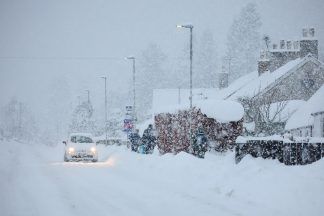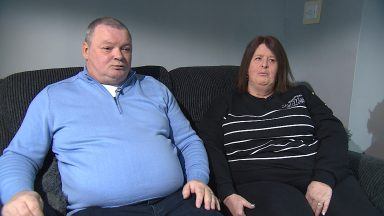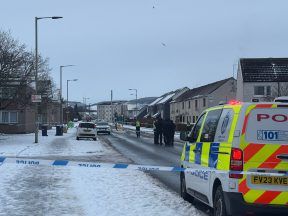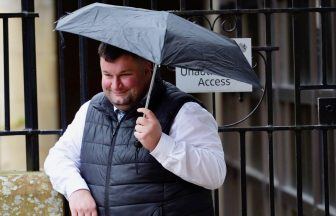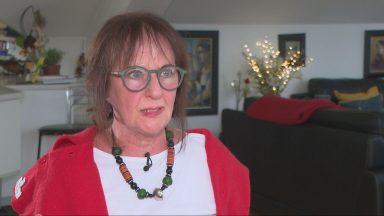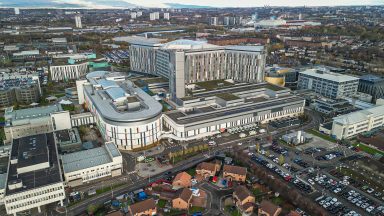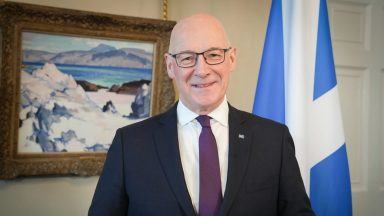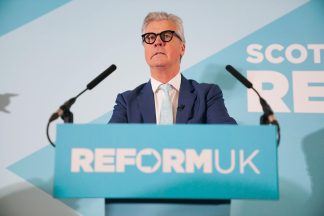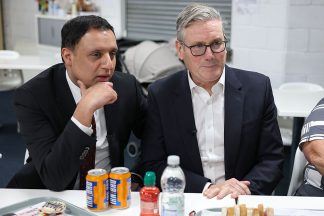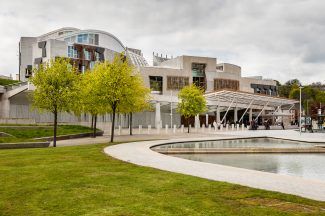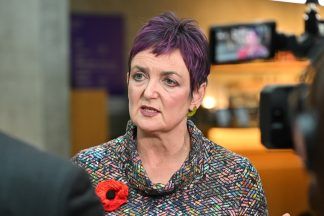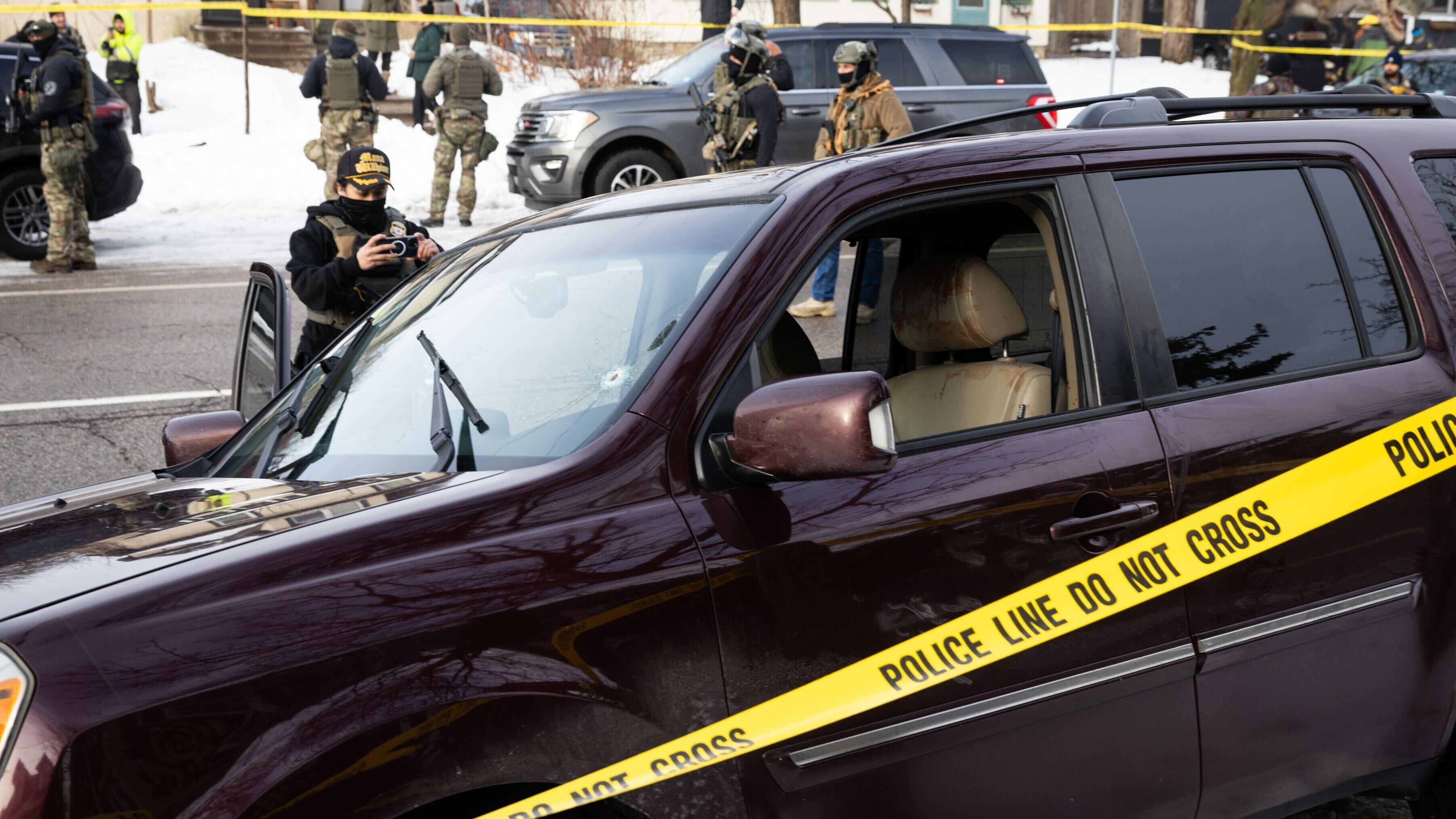Following a surge of coronavirus cases, the government announced a raft of new restrictions in a bid to control the coronavirus outbreak.
All pubs, restaurants and cafes in Scotland must close their indoor premises from 6pm on Friday and will be barred from selling alcohol indoors. Meanwhile, licensed premises in five central health board areas – Greater Glasgow and Clyde, Lothian, Lanarkshire, Forth Valley and Ayrshire and Arran – will be shut altogether.
With the new restrictions set to come into force from Friday, John Mackay spoke with Deputy First Minister John Swinney to find out what the new rules will mean for Scots.
John Mackay: Would you characterise this as a ‘circuit breaker’?
John Swinney: What I would say is that we’re having to take some fairly significant measures to tackle the rise in coronavirus. We’ve seen, over a number of weeks, an increase in the prevalence of the virus and the number of infections, and as a consequence we’ve taken a series of actions to try to erase that. But what’s prompted us to act today is the information that our Chief Medical Officers have given us, that if the virus continues to spread at the rate it is currently spreading, by the end of October we’ll be back to the levels that we had in place in March, and we simply cannot allow that to happen.
JM: The reason I ask about the circuit breaker is that, just last week, Professor Jason Leith said that if the R number was around about 1.7 then a circuit breaker really wasn’t going to make much difference; you had to be closer to the R number of 1 for it to make a difference. So even if this is not a circuit breaker as such, how is this going to reduce the R number, which is really what you want to do?
JS: We’ve got to see this as part of the combination of measures that we are taking. A couple of weeks ago, we essentially put in place new restrictions that stopped people visiting indoors in other people’s houses, and when you take the effect of that, along with the measures that we’re taking now to restrict the ability of people to gather together in hospitality settings, and also a reaffirmation and a reinforcement of the physical distancing requirements – for example in retail spaces, which we’re setting out today as well – these are a combination of measures designed to tackle the spread of the virus and to get the virus more under control. So I think it’s important to see all of these different measures together as part of a combined strategy to reduce the significance of the virus, and to give us more chance to keep it suppressed within the community.
JM: Nonetheless, a lot of people in the Central Belt in particular have not been allowed to visit people in other homes and they’ve been doing that for a number of weeks now. Is that actually making any difference? Are people maybe beginning to feel weary of that, saying it’s not making any change?
JS: I’m certain that people are feeling weary of the current situation, I have absolutely no doubt about that whatsoever, but what I would appeal to people to do is essentially stick with this and stick with us on these measures, because without the interventions that we have set out today and without the level of public compliance that we have needed throughout this pandemic, I’m afraid the virus will spread to a much more significant level within our community. We’re already seeing hospital admissions rising, we’re seeing the position on admission to intensive care increasing, and sadly we’re seeing the number of fatalities increasing as well. So the warning signs are all there for us, and what we want to do is to take early, swift action to intervene, to ensure that the virus does not get as much of a grip as it got earlier on in the year, where we saw very clearly the very significant implications it could have. If we can get people to stick with these approaches, we have a chance of getting the virus back under control.
JM: But will this be the end of it, because we had the big lockdown over the spring and early summer, we’ve had the restrictions in certain parts of the country in terms of house-to-house visits, we’ve now got these restrictions – they may last two weeks, they may last longer – is this going to be a repeated pattern?
JS: We’ve put in place the very restrictive measures for the next 16 days, or 16 days starting from Friday, with the objective of giving us an opportunity to suppress the virus. We will then return to the restrictions as they currently exist within Scotland today, and we hope that that will be enough to get the virus under control. Obviously we’ll look at the data very closely, we’ve published a detailed evidence paper that demonstrates where the problems are coming from and how we’re trying to address those, and we hope that by the end of this month, we’ve got much better control of the virus – enabling us to continue the opening up of society as we have been able to do so far. But I don’t think there can be any guarantee of that point, and that’s an important point I would share with your viewers – this needs a huge amount of public compliance to make sure we are successful and as a consequence, make sure we are all safe as a result.
JM: But some might think these rules are very confusing because they’re different for different parts of the country. Even as evidence of that, when STV News phoned the Scottish Government to ask for specifics, like gyms in particular, the spokesperson at the Scottish Government wasn’t entirely sure and had to go and check. So if that’s the case in the Scottish Government, you can imagine why there is confusion in the public – what they can do, where they can go.
JS: What we’ve tried to do is set out a very clear geography around the type of restrictions that are coming into force. There’s going to be general restrictions applied across the whole of Scotland that will be applied, but they will be applied more intensely in the Central Belt areas. The purpose of that is essentially to represent where the intensity of the virus happens to be just now, and the data that we published today shows very clearly that prevalence within the Central Belt. We will do our best over the course of the next few days to communicate the information about the restrictions as openly, as clearly and as comprehensively as we possibly can do, to make sure that the public are well informed about all of the details that are involved.
JM: The Scottish Hospitality Group says that this is a ‘death sentence’ for many businesses.
JS: We’ve put in place today a £40 million fund, which we’ve had to work very hard to put together because we’ve been given no additional money from the UK Government to have all the borrowing powers and the financial flexibility; we’ve had to dip into our own resources [and] change our priorities, to get £40 million available to support the hospitality sector. I appreciate and understand the degree of concern and anxiety there will be within hospitality. We’ve taken a little bit of time to ensure that we can engage properly and fully and constructively with the sector to identify how we can best target that money to support the sector to get through what is going to be a difficult couple of weeks. If we can do that, then hopefully by the end of the month we’ll be in a stronger place where the virus is more suppressed and hospitality can be able to resume its activities, but it does need a huge amount of engagement and participation from the sector.
JM: But pubs and restaurants are highly regulated already – are people not just going to be encouraged to go back to homes and mix in their homes, which is unregulated obviously?
JS: We have to get across a message to people that they really have to be extraordinarily careful in the next couple of weeks, and we’re having to restrict the ability of people to meet up. I suppose that’s the simplest way to express it. What we’re finding is that, where people are gathering together, whether it’s in household situations or whether it’s in pubs and restaurants, this is leading to a spread of the virus. Certainly for the last couple of weeks, we’ve been saying to people ‘don’t visit others in their own houses’ and we’re now saying to people ‘don’t get together in the hospitality sector’ because of the risk of spreading the virus. We need to get that message out clearly to people, to essentially minimise their social interaction over the next couple of weeks to give us the best opportunity to suppress the virus.
Follow STV News on WhatsApp
Scan the QR code on your mobile device for all the latest news from around the country


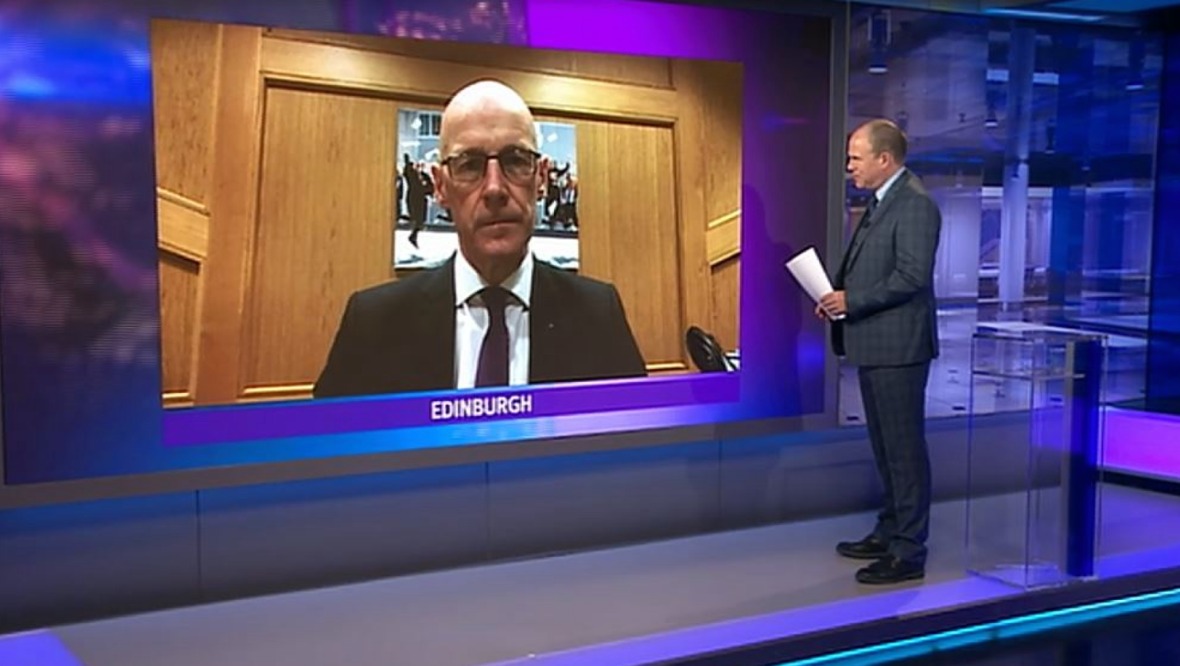 STV News
STV News

